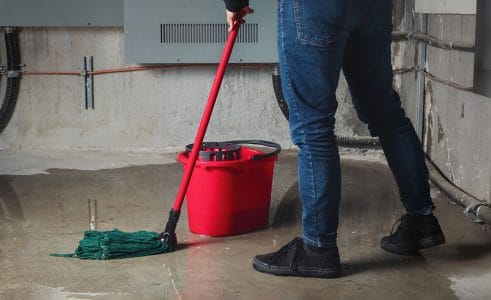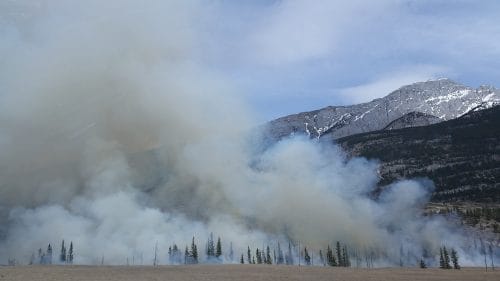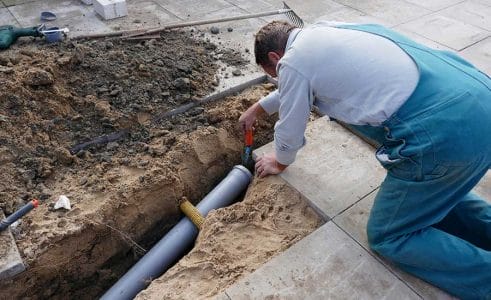Hurricane Preparedness
Hurricanes cost an average of $26 billion per year and they cause a huge amount of property damage. Make yourself aware of how to prepare for a hurricane, and how to stay safe when a storm hits.
How To Prepare For A Hurricane
Step 1: Plan
The first thing you need to do when preparing for a hurricane is make a plan outlining the information you will need and the procedures to be followed in case a hurricane hits. Your plan should include:
- Contact details – family, friends, schools, work places, and emergency services
- Insurance details – policy, ‘before’ photographs of your property, and claim process information
- Maps with at least two evacuation routes marked – in high-risk states, hurricane evacuation routes are signposted
- An inventory of your possessions – use as a reference in case anything is damaged
- Details of nearby shelters
Discuss your plan with family and friends to ensure everyone knows what to do when a hurricane occurs.
Step 2: Create A Disaster Kit
You should gather supplies into a disaster kit to help you stay safe during a hurricane. Your disaster kit may have to last for several days, so ensure it’s well stocked. Key items are:
- Food and water to last at least three days for each person and animal
- Medicines and first aid supplies
- Flashlights and batteries
- Portable radio and mobile phone
- Toiletries
- Maps of the local area
- Money (cash)
- Portable generator (if in an area prone to power outages and hurricanes)
If you’re going to be at home when the hurricane hits, fill up all available containers with water beforehand, including sinks and bathtubs. Stock your refrigerator and freezer with water and ice. If the hurricane is severe (Category 3 or higher), water supplies are likely to be down or contaminated for multiple days after the storm.
NOTE: Water stored in sinks and bathtubs is safe for flushing toilets, washing dishes, and doing laundry. If you intend to use it for drinking, cooking, or brushing teeth, make sure you boil it for 3-5 minutes first.
To save room in your refrigerator, purchase non-perishables and canned foods.
Have one disaster kit prepared for your house and one to take with you should you need to evacuate. If hurricane watches and warnings are frequent in your area, consider storing a kit in your car at all times, so you are able to evacuate the area quickly. Remember to fill up the gas tank of your car if a storm is likely.
Step 3: Establish A Safe Room In Your House
Even if your first choice would be to evacuate the area during a hurricane, bear in mind that this may not always be possible. It is best to identify the room in your house that would offer the most protection if you have to stay.
The ideal safe room should have no windows or external doors and be on a low floor of the building. Store your in-house disaster kit and hurricane plan in this room so it is accessible at all times. If a hurricane approaches, move water and food into this room as well.
Unlike with tornados, hurricane safe rooms should not be located in a basement. Hurricanes are frequently accompanied by flooding, so subterranean shelters should be avoided. If possible, have an option in your plan to move to higher floors in case flooding occurs.
For more information about setting up safe rooms, visit FEMA’s website.
Hurricane Insurance
Damage done by hurricanes is usually inflicted by wind and flooding, which can be costly losses. Have a conversation early on with your insurance providers to ensure that you take out adequate coverage to protect yourself from the costs hurricane damage can incur.
Due to the high cost of damage caused by hurricanes, homeowners in hurricane-prone areas often need to take out multiple policies to ensure they are covered in the event of a severe storm. Some policies to consider are:
- Homeowners, renters, or condo insurance
- Wind coverage
- National Flood Insurance Program (NFIP) flood insurance – for property damage up to $250,000 and possessions up to $100,000
- Additional flood insurance from a private provider if your property is worth over $250,000 or you have over $100,000 of possessions
Contact your insurers to discuss options and check you are fully covered. Remember – most insurance policies have waiting periods, so be sure to add necessary coverage before the season gets underway.
How Do You Know A Hurricane Is Coming?
Time of Year
Hurricanes occur most frequently during hurricane season, which runs from June 1st to November 30th, although storms do occasionally occur outside of this time period. Storms are most frequent in August and September, with September 10th being the usual peak of activity.
Geography
The Southeast bears the brunt of the hurricanes that hit the United States. Storm systems gather strength as they cross the warm waters of the Atlantic Ocean before they make landfall in the U.S. As a hurricane progresses north, the air cools and the storm’s strength decreases. The ten states most commonly hit by hurricanes are:
- Florida
- Texas
- Louisiana
- North Carolina
- South Carolina
- Alabama
- Georgia
- Mississippi
- New York
- Connecticut
Although hurricanes are most common in the Southeast, hurricanes can also form in the Pacific Ocean, striking the Western United States and Mexico. The Pacific has its own hurricane season, which runs from May 15th to November 30th.
Hurricane Forecasts
Reliable information about tropical storms and hurricanes heading your way is issued by the National Hurricane Center (NHC). Warnings from the NHC are broadcast on TV and radio. They cover the coming 36 hours. The National Hurricane Center’s website has a live map, which shows the progress of any tropical storm activity expected over the Atlantic and Pacific Oceans in the next 48 hours.
Hurricane Trackers
Once you’re aware of an incoming hurricane, you can keep an eye on the storm’s path and strength using a hurricane tracker app on your mobile device.
A hurricane tracker app sends you hurricane updates in your area. Information will include projections of where hurricanes will make landfall, how strong winds are, and what damage has been done.
There are a number of free and paid hurricane tracker apps available for mobile devices. One possible app to look into is Hurricane by American Red Cross, which is freely available. The app not only provides real-time updates on hurricane news, but also allows users to communicate with family and emergency services through the app.
Knowing Hurricane Categories
Hurricane news can be difficult to understand if you do not know the terminology used to describe them. Hurricanes are rated using categories defined by the Saffir-Simpson hurricane wind scale, which was developed by the National Hurricane Center.
Five hurricane categories exist, and each one is defined by the wind speeds measured in the storm. The categories are divided based on the levels of destruction a storm will cause.
The categories as explained by the National Hurricane Center are:
Category 1 hurricane (74 to 95 mph): Very dangerous winds will produce some damage:Well-constructed frame homes could have damage to roof, shingles, vinyl siding, and gutters. Large branches of trees will snap and shallowly rooted trees may be toppled. Extensive damage to power lines and poles likely will result in power outages that could last a few to several days.
Category 2 hurricane (96 to 110 mph): Extremely dangerous winds will cause extensive damage:Well-constructed frame homes could sustain major roof and siding damage. Many shallowly rooted trees will be snapped or uprooted and block numerous roads. Near-total power loss is expected with outages that could last from several days to weeks.
Category 3 hurricane (111 to 129 mph): Devastating damage will occur:Well-built framed homes may incur major damage or removal of roof decking and gable ends. Many trees will be snapped or uprooted, blocking numerous roads. Electricity and water will be unavailable for several days to weeks after the storm passes.
Category 4 hurricane (130 to 156 mph): Catastrophic damage will occur:Well-built framed homes can sustain severe damage with loss of most of the roof structure and/or some exterior walls. Most trees will be snapped or uprooted and power poles downed. Fallen trees and power poles will isolate residential areas. Power outages will last weeks to possibly months. Most of the area will be uninhabitable for weeks or months.
Category 5 hurricane (157 mph and above): Catastrophic damage will occur. A high percentage of framed homes will be destroyed, with total roof failure and wall collapse. Fallen trees and power poles will isolate residential areas. Power outages will last for weeks to possibly months. Most of the area will be uninhabitable for weeks or months.
You might hear newscasters reference a storm as a Category 6 hurricane. This is not a rating recognized by the Saffir-Simpson scale – it is an informal way of denoting a storm with winds upwards of 185 mph. The increased wind speed for a ‘Category 6’ hurricane does not correspond with an increase in destructiveness, as Category 5 hurricanes already indicate a storm capable of complete destruction.
It’s important to remember hurricane categories only give information about wind speeds. They are not an indicator of flood risk or tornados. Keep up-to-date with all weather alerts from the Emergency Alert Service to be fully prepared.
There are several other terms associated with hurricanes and tropical storms. You will often hear them used by newscasters. Read our infographic to find out what they mean.
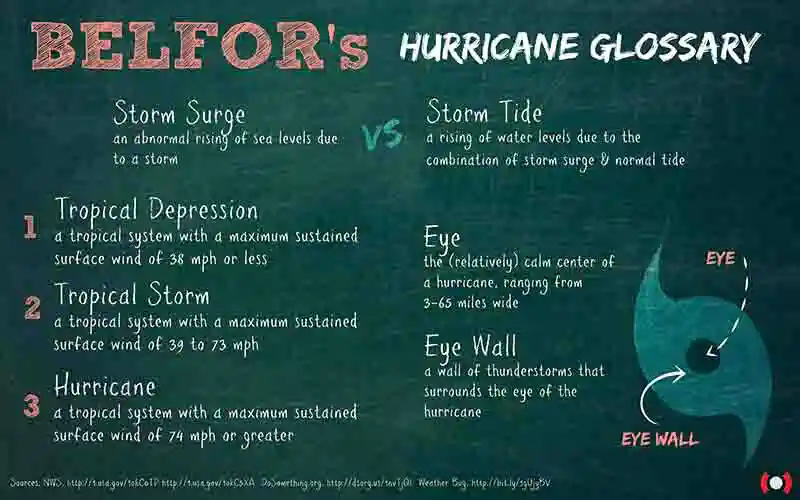
How To Prepare Your House For A Hurricane
Protect Your Windows
Windows are a weak point in your house and if they break they create a range of dangers during severe storms. Broken glass being whipped around by strong winds is likely to cause serious injury. Broken windows also allow air pressure to rise in the house, increasing the risk of roof failures.
There are a number of ways you can protect against smashed and shattered windows in a storm:
- Storm Shutters – These fit over your windows and act as a barrier between the glass and the wind. Track shutters are the most common and cost around $7 per square foot. Track shutters are fitted to tracks on your windows before a storm. Allow 15 minutes per window for shutter installation.
Roller storm shutters are also available. These are attached to your house all year round, and are pulled down in the event of a storm, saving you time. Rollers are more expensive, costing around $18 to $30 per square foot. Prep time for roller shutters in just 15 to 30 minutes for your whole house. - Boarding-up – If you do not have storm shutters, boarding your windows with plywood does offer some protection. Before a hurricane hits, measure your windows and take the measurements with you when you go to buy the plywood. Speak to a supplier at the store about the correct size and thickness of plywood for your house to ensure you will have adequate coverage for your property. Install the hardware for hanging the boards ahead of time and keep a set of nails and hammers handy to save time when a storm is coming.
- Hurricane film – Hurricane film is a transparent, self-adhesive material which can be left on windows year-round. The film holds glass together, preventing windows from shattering. Although this will lessen risk of injury should your windows break, it does not protect them from blowing in. It is best to couple use of hurricane film with a shutter system.
- Caulking – Caulk cracks around your window frames to prevent wind and water from entering your home. Water can enter your home through small gaps around door and window frames, which not only allows flooding but poses risk to your property by allowing water into wall cavities.
All these tools can also protect doors, but make sure it’s possible for you to exit your home once the storm shutters are in place.
Protecting Your Roof
Hurricane winds may cause damage to your roof and in extreme cases, roof failure. To avoid this happening to your property, take the following steps to protect your house:
- Seal – Seal your roof deck by applying waterproof tape over seams. This will help prevent leaks into your house during a storm.
- Repair – Check your roof before hurricane season, and replace any missing, broken or loose shingles. Loose shingles are likely to be picked up by hurricane winds, creating a hazard and exposing a weakness in your house.
- Secure – Install roof straps to secure your roof to the walls of your property. Roof straps are metal straps that connect a roof to the walls of the house it sits on.
Clearing The Exteriors
One of the major risks during hurricanes is flying debris, which can be dangerous to people and property. To lower the risk of injury and damage, clear the exterior and yard of your property of loose objects that may become airborne in strong winds.
Store all outdoor furniture, tools and decor in a secure location. If you have no external storage, you may need to bring these inside your house. Check the surrounding area for tree limbs that might come down in a storm and try to cut back heavy branches that overhang your property before hurricane season.
What To Do During A Hurricane
- Evacuate – Follow all orders for evacuation immediately. If you are being told to leave your home, it is for your own safety. If you are not told to evacuate, assess what is the best option for you and your family. It may be best to leave if one or more of the following property types applies to you:
- Previously storm-damaged
- On a flood plain
- Mobile home
- Apartment block
- Frame home
- Carefully monitor updates from the National Hurricane Center and other severe weather warnings.
- If you don’t evacuate, stay inside; keep away from windows and doors.
- If your home is damaged, or flooding begins, turn off your electricity.
- Do not go outside right when you think the storm has stopped. It is possible that you are in the eye of the storm and strong winds will pick up again shortly.
- Only use mobile phones; landlines could cause injury from lightning.
- Take shelter away from open bodies of water, which will strengthen the storm.
- Do not use open flames, as these may fall or spread due to winds, causing fire in your property.
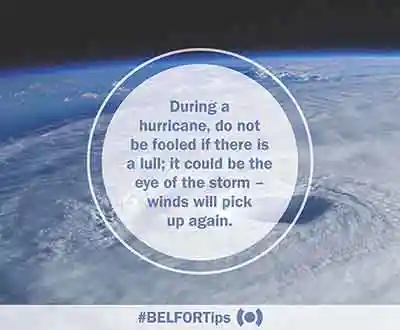
Hurricane Recovery
Hurricane recovery after severe storms (Category 3 and above) can take months or even years.
If you have evacuated your property, do not return to the area until you have been advised to do so by emergency services and/or local authorities.
If you remained in your home during the hurricane, proceed with extreme caution when going outside. Wait for at least three hours before leaving to ensure the storm has passed entirely and the area has had time to settle. Keep up to date with National Hurricane Center alerts and local news to know when your area is safe.
Conduct an extensive visual check from your doors and windows to see if there are any hazards in your vicinity. Do not go outside if you can see high flood water or downed powerlines. Instead, alert emergency services that you are trapped and wait.
Once you are safely able to assess the condition of your property, contact your insurers. Describe the damage caused and ask them about next steps for the claiming process, including the timeframe for when an estimator will be able to make it to your property. Have your inventory and ‘before’ photographs from your hurricane plan on hand when they arrive.
When it is safe to conduct the repairs, contact a property restoration service to plan and carry out the work.
.jpg)
